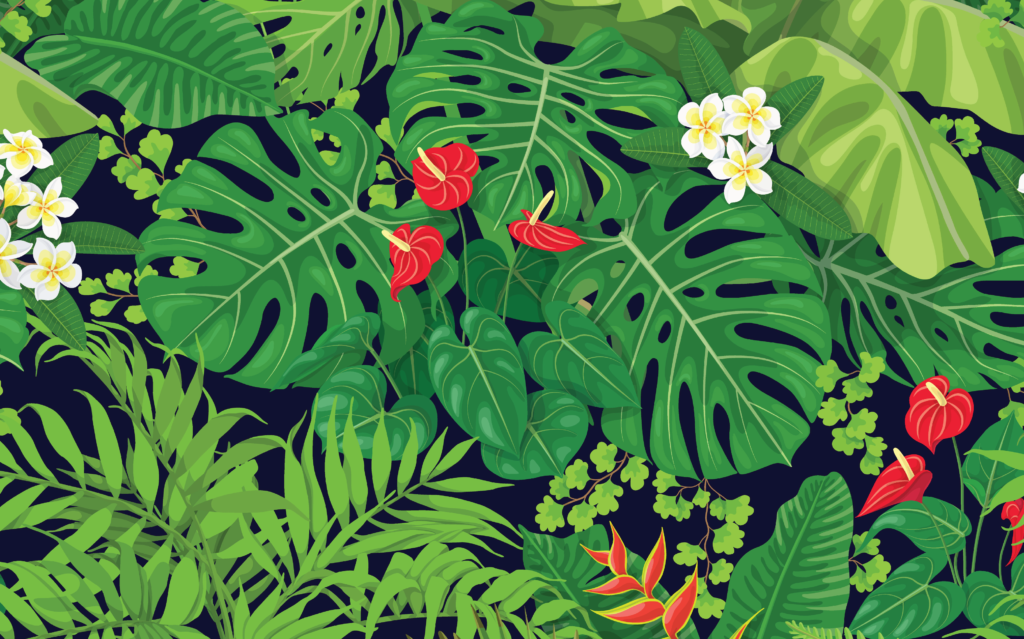Trippy Talk: Meet Ayahuasca with Sitaramaya Sita and PlantTeachers
Sitaramaya Sita is a spiritual herbalist, pusangera, and plant wisdom practitioner formally trained in the Shipibo ayahuasca tradition.

The files needed a unique name. I had always loved the Hindu devotional chant “Sita Ram” and then “a-y-a” came to me intuitively from the first three letters of my beloved teacher ayahuasca. By combining the sounds and the vibration of the sounds, “Sitaramaya,” originally created for the Amazonian photos, over time, morphed off the internet and came into being as my name. Sita Ram refers to a story from the Ramayana. Sita is the consort of Ram who represents consciousness. Long story short, Sita is abducted by an evil being who whisks her away. Hanuman, the monkey god and a devotee of Ram, is sent. He flies over seven seas and finds Sita with the evil spirit. He returns to Ram and says, “You have to go. I can’t bring her to you.” So, Ram gets on the back of Hanuman and they fly across the seven seas to this Island where Sita is. However, Ram doesn’t believe that Sita has been faithful to him. To him, it looks like Sita and this evil spirit have been together. In order to prove that she was loyal and faithful, Sita walks through the fire and doesn’t burn. “Rama” represents infinite consciousness. “Sita” is in the light of truth; steadfast, loyal, and faithful. When I hear: “Sita,” “Rama,” “Aya,” I feel called to embody those qualities. Sita: From my perspective, there are four primary parts to an experience, whether it’s ayahuasca or something else: intention, preparation, participation in the experience, and integration afterward. Those words mean different things to people, so they may unfold into different kinds of processes, depending on the person. Before one of my earliest early experiences, drinking ayahuasca, the shaman that would become my maestro asked me, “Why are you here?” That’s a question we always need to ask ourselves. That can help form a powerful, clear intention.
Then there’s a specific preparation in working with the medicine, which includes going on a dieta so that the body, mind, and spirit are prepared to meet ayahuasca. Certainly, ayahuasca does a good job of cleaning things out. But the more we can cleanse in advance, the deeper the experience can go. I strongly encourage people to do their homework. Who are you taking it with? What is the setting going to be like? Am I prepared for that too? An ayahuasca retreat in a remote village in the Amazon is not going to be the same as a ceremony in a luxury villa. Part of the preparation is looking ahead to two or three days after the experience. On the other side of the ceremony, make sure that support systems are in place, whether it’s childcare, animal care, food waiting, support from friends, or somebody that you can call if you’re in a difficult situation. Prepare for that in advance. Sita: Integration is a big word and can mean different things. From my perspective, it’s already integrated because it’s a part of who we are now. It’s part of our consciousness, physiology, and even neurobiology. What we do with it in terms of integration begins with setting an intention. For example, let’s say someone had an insight such as “I’m really hard on myself.” What is the intention that you want to hold around doing something differently in your life? I’ve been doing a little practice lately: what can I do for five minutes for the next five days to support my intention moving forward? For example, if the realization is, “I’m really hard on myself,” maybe for the next five days spend five minutes acknowledging your gifts.
There are different things that come up during a ceremony. Pick something, set an intention around it, and then decide what behavior, or activity, can support whatever insights come forth to integrate them.
There’s a full range of experiences that can come to the surface while working with entheogenic plants and medicines. Know that going in and be ready to do the work on the backend to take that content and put it in service towards an improved quality of life for yourself. Sita: There is no “biggest takeaway” for me. I’ll roll the clock back to the first years I started and share one of the more profound and meaningful experiences that I had. In one ceremony, I went back to being my biological father’s sperm.
There was an awareness of the randomness of life, the divine orchestration of life, the impetus or the impulse to make it to the egg and manifest. It blew my mind. It reminded me that I come from the oneness. I am not separate from it. Sita: What are we asking of the plants and entheogenic substances? Is equal, equitable, expanded consciousness available to anyone who wants it and are we making the planet a better place to live? I’d like to hear a little bit more about these questions from a global perspective. How do we provide access? How do we do it differently from conventional mental health care, religious, and medical systems where the privileged have access to the best care and the underserved communities and the disenfranchised communities have access to the worst care? I want to hear about inclusivity rather than exclusivity. Sita: I knew nothing, and it was perfect. I think if someone had told me anything, I wouldn’t have gone. That’s my honest answer. Sita: To keep a beginner’s mind. Also, you can be vulnerable and safe at the same time, which is something I teach now. And, remember more. Carry the feelings from the experiences into my life every day and don’t compartmentalize. Remember those elevated emotions, those openings, and even the terror that I overcame. Remember.
Read the full article at the original website
References:
